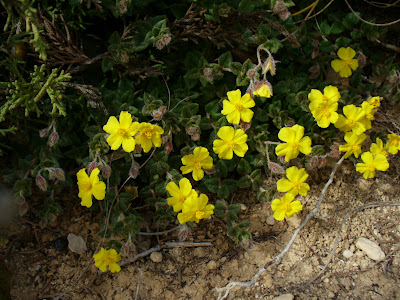
Volto a falar nestes pequenotes, porque lhes acho um piadão. Tenho andado a observá-los, e aquilo que eu pensava ser um comportamento causado pela chuva é afinal um comportamento normal. Todas as manhãs os vou encontrar abrigados no interior dos jarros brancos. Quando o tempo aquece lá vão eles à vida deles, para tornarem a voltar ao entardecer.
The reason why I'm posting about these little guys again is simply because I really like them. I've been watching them for the past few days and they have this really funny behavior. I thought that they were inside the arum lily flowers only during the raining period but as it turns out that is their normal behavior. Every morning there they are. When the temperature raises they start to wake up and of they go, on with their lives. At dusk when the temperature drops, here they come again

Andei a ler umas coisas e parecem-me ser machos de abelha cornuda*(tradução livre de "long horned bee"). Pertencem à tribo Eucerini (uma subfamilia pode dividir-se me várias tribos) e enquanto a fêmea controi o seu ninho no solo (daí o outro nome pelo qual pode ser conhecida abelha escavadora - digging bee) os machos reunem-se para se abrigarem em determinadas plantas.
I've been reading a few things and I think they are male long horned bees*.They belong to the tribe Eucerini (a subfamily can be divided in several tribes). The female bees build their nests underground (hence their other name digging bee), but the males congregate around plants to spend the night.

Digam lá que não é a abelha mais fotogénica que já viram?
Don't they make the best photos?

*A informação aqui fornecida foi recolhida na net, e como é lógico poderá não estar correcta. Se alguém puder/quizer, esteja à vontade para corrigir.
*This information was collected from the net and it could be incorrect. If anyone wishes to correct it please feel free to do so.


























































